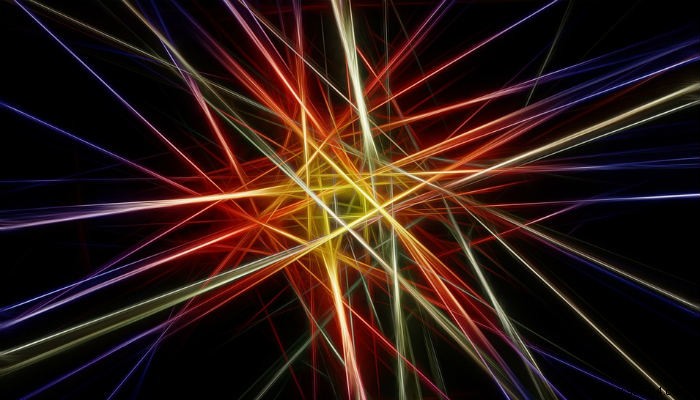Projectors are great for watching a movie and providing the latest numbers on the board or PowerPoints in the classroom. They are capable of producing a larger picture than TVs and customizing the picture size is quick and easy. Additionally, projectors typically have a lower cost per inch than TVs. They also reflect light, while TVs emit light. As a result, looking at an image produced by a projector is less straining on the eyes. Finally, the projectors are compact in size. Therefore, projectors have a smaller footprint than TVs and are portable.
Due to the benefits of projection, many people are considering projectors. The latest addition to the neighborhood is the laser projector. Here's what you need to know about it and its pros and cons, before making the decision to buy it.
There are currently two different types of projectors on the market, the bulb (sometimes called a lamp) and the laser. Bulb projectors are older and more common. The main difference between the two is how they produce an image.

Laser: Laser projection differs from bulb projection in the way it produces the image we see on screen. With bulb-based projection, the light source (the bulb) must illuminate a panel which in turn produces the image. In contrast, laser projectors use lasers to generate light. This method has a number of advantages, leading many to believe that lasers are the future of projectors.
Laser projectors are not that different from traditional projectors. That being said, laser projectors have many advantages over bulb projectors that make them very attractive to consumers.
The projectors offer excellent image quality and a large viewing area, so they seem like a no-brainer. However, the biggest caveat about projectors is the bulbs. Projector bulbs can be very expensive. The lifespan of a bulb depends on a number of different factors, such as brightness settings. Although consumers are getting different mileage from their bulb-powered projectors, one thing is certain:bulbs will eventually need to be replaced.

Replacement is not only expensive, but can be a real hassle. For example, imagine pulling the ladder out of the garage to replace the bulb in your ceiling-mounted spotlight. Also, the bulbs need to "warm up" before they can produce the bright light needed to produce an image. Laser projectors do not suffer from these disadvantages. Since they don't depend on a light bulb to produce light, there are no expensive replacements. Additionally, the laser projectors offer near-instant on/off functionality.
As we mentioned earlier, traditional bulb projectors create images in a two-step process. First, the bulb creates a bright, white light. This light is directed onto an LCD or DLP panel, which manipulates the light to produce the final images we see on screen. The LCD/DLP panel is what is responsible for creating the colors we see. Therefore, the bulb produces white light regardless of the colors presented on the screen, which leads to a lot of wasted energy.

Also, since bulbs get very hot, bulb projectors need fans to cool everything down. This results in greater energy consumption. On the other hand, lasers only create the color needed to produce the image. As a result, laser projectors consume much less power, while providing better image quality, better brightness and better contrast.
When buying a bulb projector, you have to consider the projection distance. Throw is the distance between the projector lens and the screen. The size of the image projected on the screen will determine where the projector is placed in a room. If you plan to mount the projector on the ceiling, it is very important that you calculate this distance correctly.

On the other hand, many laser projectors on the market are ultra short throw. These spotlights are suitable for virtually any room, regardless of size. They are designed to be placed on a table, very close to the screen. For example, some ultra-short-throw projectors can produce a 120-inch image eight inches from the screen.
Note :All ultra short throw projectors will have different throw distance requirements.
One of the biggest benefits of laser projectors is an upgrade in overall image quality. Because image projection is not dependent on a light bulb, lasers can produce images with a wider color gamut. Therefore, laser projectors are able to deliver images with richer blacks and more vibrant colors. This results in an image with significantly better contrast because the lasers produce the necessary colors directly.

Traditional bulb projectors have to filter out the color of white light, which negatively affects contrast. In addition, because lasers directly create the necessary light, laser projectors can produce significantly brighter images while maintaining excellent contrast.
The biggest downside to laser projectors is the initial cost of the machine. Laser projectors are significantly more expensive than traditional projectors. At the time of this writing, even the cheapest laser projectors cost about three times as much as a bulb projector. That being said, laser projectors should get cheaper over time. This is because there are not as many maintenance costs associated with laser projectors, including an expensive bulb.

In conclusion, laser projectors are almost certainly the future of big screen image projection. They are able to produce better colors and a brighter image, while reducing running and maintenance costs. That being said, laser projectors are very expensive, making them out of reach for many consumers (for now).
What is your opinion on laser projectors? Are you considering buying one? Or do you wait for prices to drop before pulling the trigger? Let us know in the comments!